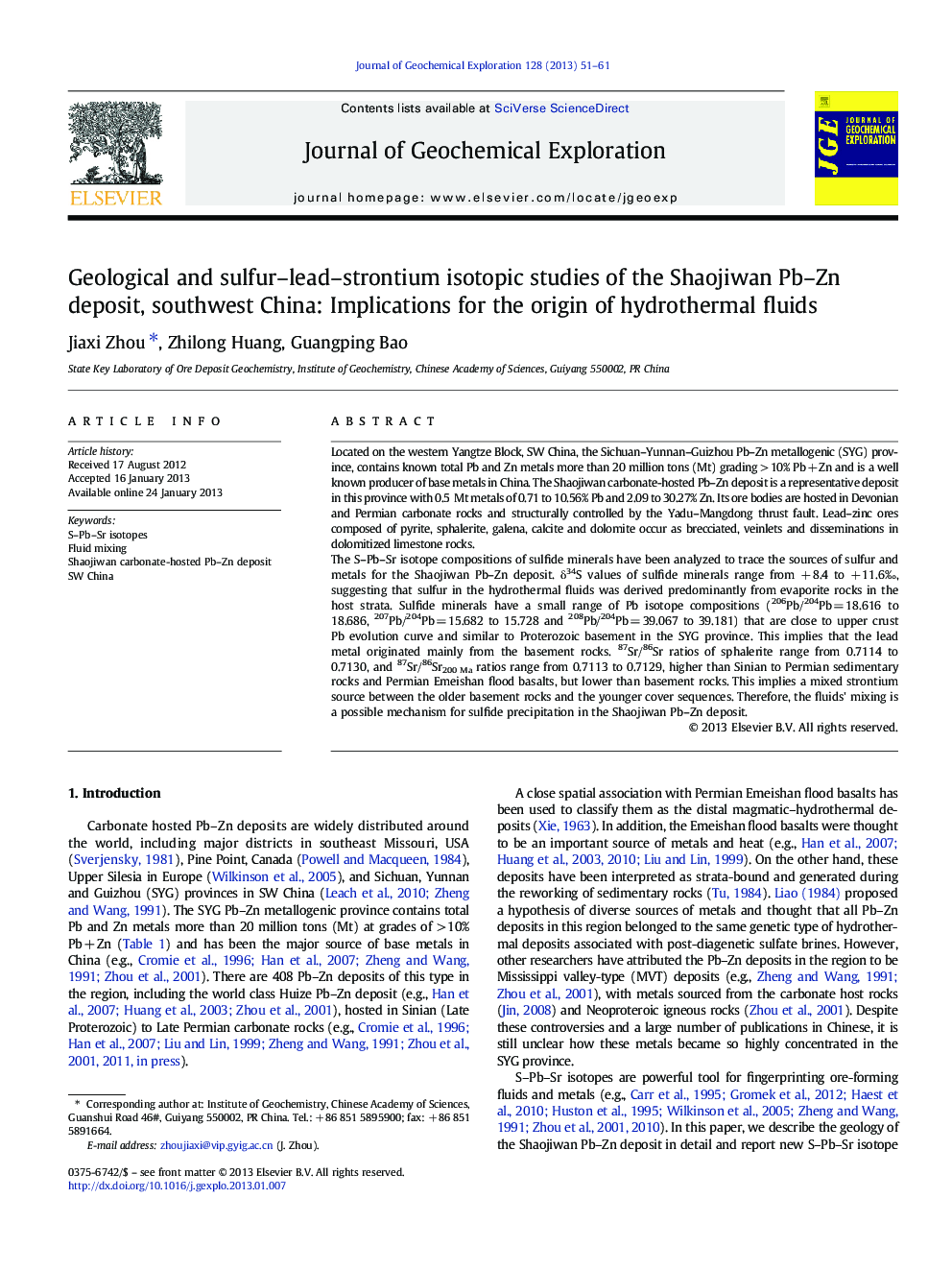| کد مقاله | کد نشریه | سال انتشار | مقاله انگلیسی | نسخه تمام متن |
|---|---|---|---|---|
| 4457627 | 1620929 | 2013 | 11 صفحه PDF | دانلود رایگان |

Located on the western Yangtze Block, SW China, the Sichuan–Yunnan–Guizhou Pb–Zn metallogenic (SYG) province, contains known total Pb and Zn metals more than 20 million tons (Mt) grading > 10% Pb + Zn and is a well known producer of base metals in China. The Shaojiwan carbonate-hosted Pb–Zn deposit is a representative deposit in this province with 0.5 Mt metals of 0.71 to 10.56% Pb and 2.09 to 30.27% Zn. Its ore bodies are hosted in Devonian and Permian carbonate rocks and structurally controlled by the Yadu–Mangdong thrust fault. Lead–zinc ores composed of pyrite, sphalerite, galena, calcite and dolomite occur as brecciated, veinlets and disseminations in dolomitized limestone rocks.The S–Pb–Sr isotope compositions of sulfide minerals have been analyzed to trace the sources of sulfur and metals for the Shaojiwan Pb–Zn deposit. δ34S values of sulfide minerals range from + 8.4 to + 11.6‰, suggesting that sulfur in the hydrothermal fluids was derived predominantly from evaporite rocks in the host strata. Sulfide minerals have a small range of Pb isotope compositions (206Pb/204Pb = 18.616 to 18.686, 207Pb/204Pb = 15.682 to 15.728 and 208Pb/204Pb = 39.067 to 39.181) that are close to upper crust Pb evolution curve and similar to Proterozoic basement in the SYG province. This implies that the lead metal originated mainly from the basement rocks. 87Sr/86Sr ratios of sphalerite range from 0.7114 to 0.7130, and 87Sr/86Sr200 Ma ratios range from 0.7113 to 0.7129, higher than Sinian to Permian sedimentary rocks and Permian Emeishan flood basalts, but lower than basement rocks. This implies a mixed strontium source between the older basement rocks and the younger cover sequences. Therefore, the fluids' mixing is a possible mechanism for sulfide precipitation in the Shaojiwan Pb–Zn deposit.
► Sulfur in the hydrothermal fluids was derived from evaporites in the host strata.
► Pb metal in the ore-forming solutions originated from the basement rocks.
► Ore Sr has a mixture of the older basement rocks and the younger cover sequences.
► Permian Emeishan flood basalts act as an impermeable layer.
Journal: Journal of Geochemical Exploration - Volume 128, May 2013, Pages 51–61